Joint Transmit Antenna Selection and Power Allocation for ISDF Relaying Mobile-to-Mobile Sensor Networks
Abstract
:1. Introduction
- Closed-form expressions for the probability density function (PDF) and cumulative density functions (CDF) of the SNR over N-Nakagami fading channels are presented. These are used to derive exact closed-form OP expressions for optimal and suboptimal TAS schemes. These expressions can be used to evaluate the performance of inter-vehicular networks, mobile wireless sensor networks, and mobile heterogeneous networks.
- The power allocation problem is formulated to determine the optimum power distribution between the broadcast and relay phases.
- The accuracy of the analytical results under different conditions is verified through numerical simulation. Results are given which show that the optimal TAS scheme has better OP performance than the suboptimal scheme. It is further shown that the power allocation parameter has a significant influence on the OP performance.
- The OP expressions presented can be used to evaluate the performance of senor communication systems employed in inter-vehicular networks, mobile wireless sensor networks and mobile heterogeneous networks.
2. The System and Channel Model
2.1. System Model
2.2. System Model
3. The OP of the Optimal TAS Scheme
3.1. γth > γP
3.2. γth < γP
4. The OP of the Suboptimal TAS Scheme
4.1. γth > γP
4.2. γth < γP
5. Optimal Power Allocation
6. Numerical Results
7. Conclusions
Acknowledgments
Author Contributions
Conflicts of Interest
References
- Wu, G.; Talwar, S.; Johnsson, K.; Himayat, N.; Johnson, K.D. M2M: From mobile to embedded internet. IEEE Commun. Mag. 2011, 49, 36–43. [Google Scholar]
- Chen, M.; Wan, J.F.; Li, F. Machine-to-machine communications: Architectures, standards, and applications. KSII Trans. Int. Inf. Syst. 2012, 6, 480–497. [Google Scholar] [CrossRef]
- Jo, M.; Maksymyuk, T.; Strykhalyuk, B.; Cho, C.H. Device-to-device based heterogeneous radio access network architecture for mobile cloud computing. IEEE Wirel. Commun. 2015, 22, 50–58. [Google Scholar] [CrossRef]
- Mumtaz, S.; Huq, K.M.S.; Rodriguez, J. Direct mobile-to-mobile communication: Paradigm for 5G. IEEE Wirel. Commun. 2014, 21, 14–23. [Google Scholar] [CrossRef]
- Chen, M.; Wan, J.F.; Gonzalez, S.; Liao, X.F.; Leung, V.C.M. A survey of recent developments in home M2M networks. IEEE Commun. Surv. Tutor. 2014, 16, 98–114. [Google Scholar] [CrossRef]
- Talha, B.; Patzold, M. Channel models for mobile-to-mobile cooperative communication systems: A state of the art review. IEEE Veh. Technol. Mag. 2011, 6, 33–43. [Google Scholar] [CrossRef]
- Salo, J.; Sallabi, H.E.; Vainikainen, P. Statistical analysis of the multiple scattering radio channel. IEEE Trans. Antennas Propag. 2006, 54, 3114–3124. [Google Scholar] [CrossRef]
- Salo, J.; Sallabi, H.E.; Vainikainen, P. The distribution of the product of independent Rayleigh random variables. IEEE Trans. Antennas Propag. 2006, 54, 639–643. [Google Scholar] [CrossRef]
- Uysal, M. Diversity analysis of space-time coding in cascaded Rayleigh fading channels. IEEE Commun. Lett. 2006, 10, 165–167. [Google Scholar] [CrossRef]
- Karagiannidis, G.K.; Sagias, N.C.; Mathiopoulos, P.T. N-Nakagami: A novel stochastic model for cascaded fading channels. IEEE Trans. Commun. 2007, 55, 1453–1458. [Google Scholar] [CrossRef]
- Gong, F.K.; Ye, P.; Wang, Y.; Zhang, N. Cooperative mobile-to-mobile communications over double Nakagami-m fading channels. IET Commun. 2012, 6, 3165–3175. [Google Scholar] [CrossRef]
- Ilhan, H.; Uysal, M.; Altunbas, I. Cooperative diversity for intervehicular communication: Performance analysis and optimization. IEEE Trans. Veh. Technol. 2009, 58, 3301–3310. [Google Scholar] [CrossRef]
- Xu, L.W.; Zhang, H.; Liu, X.; Gulliver, T.A. Performance analysis of FAF relaying M2M cooperative networks over N-Nakagami fading channels. Int. J. Signal Process. Image Process. Pattern Recognit. 2015, 8, 249–258. [Google Scholar] [CrossRef]
- Xu, L.W.; Zhang, H.; Lu, T.T.; Liu, X.; Wei, Z.Q. Performance analysis of the mobile-relay-based M2M communication over N-Nakagami fading channels. J. Appl. Sci. Eng. 2015, 18, 309–314. [Google Scholar]
- Ikki, S.S.; Ahmed, M.H. Performance analysis of incremental-relaying cooperative-diversity networks over Rayleigh fading channels. IET Commun. 2011, 5, 337–349. [Google Scholar] [CrossRef]
- Yang, C.; Wang, W.; Chen, S.; Peng, M. Outage performance of orthogonal space-time block codes transmission in opportunistic decode-and-forward cooperative networks with incremental relaying. IET Commun. 2011, 5, 61–70. [Google Scholar] [CrossRef]
- Xu, L.W.; Zhang, H.; Lu, T.T.; Gulliver, T.A. Performance analysis of the IAF relaying M2M cooperative networks over N-Nakagami fading channels. J. Commun. 2015, 10, 185–191. [Google Scholar] [CrossRef]
- Xu, L.W.; Zhang, H.; Gulliver, T.A. Performance analysis of IDF relaying M2M cooperative networks over N-Nakagami fading channels. KSII Trans. Int. Inf. Syst. 2015, 9, 3983–4001. [Google Scholar]
- Chen, H.; Liu, J.; Zhai, C.; Liu, Y.X. Performance of incremental-selective decode-and-forward relaying cooperative communications over Rayleigh fading channels. In Proceedings of the Conference on Wireless Communications & Signal Processing, Nanjing, China, 13–15 November 2009; pp. 1–5.
- Xu, L.W.; Zhang, H.; Gulliver, T.A. Performance analysis of the SIR M2M cooperative networks. Int. J. Control Autom. 2015, 8, 407–416. [Google Scholar] [CrossRef]
- Suraweera, H.A.; Smithnd, P.J.; Nallanathan, A.; Thompson, J.S. Amplify-and-forward relaying with optimal and suboptimal transmit antenna selection. IEEE Trans. Wirel. Commun. 2011, 10, 1874–1885. [Google Scholar] [CrossRef]
- Yeoh, P.L.; Elkashlan, M.; Yang, N.; Costa, D.B.D.; Duong, T.Q. Unified analysis of transmit antenna selection in MIMO multi-relay networks. IEEE Trans. Veh. Technol. 2013, 62, 933–939. [Google Scholar] [CrossRef]
- Li, H.; Song, L.Y.; Debbah, M. Energy efficiency of large-scale multiple antenna systems with transmit antenna selection. IEEE Trans. Commun. 2014, 62, 638–647. [Google Scholar] [CrossRef]
- Zhang, H.J.; Jiang, C.X.; Beaulieu, N.C.; Chu, X.L.; Wen, X.M.; Tao, M.X. Resource Allocation in Spectrum-Sharing OFDMA Femtocells with Heterogeneous Services. IEEE Trans. Commun. 2014, 62, 2366–2377. [Google Scholar] [CrossRef]
- Zhang, H.J.; Jiang, C.X.; Beaulieu, N.C.; Chu, X.L.; Wang, X.B.; Quek, T.Q.S. Resource Allocation for Cognitive Small Cell Networks: A Cooperative Bargaining Game Theoretic Approach. IEEE Trans. Wirel. Commun. 2015, 14, 3481–3493. [Google Scholar] [CrossRef]
- Zhang, H.J.; Jiang, C.X.; Mao, X.T.; Chen, H.H. Interference-Limit Resource Optimization in Cognitive Femtocells with Fairness and Imperfect Spectrum Sensing. IEEE Trans. Veh. Technol. 2015. [Google Scholar] [CrossRef]
- Zhang, H.J.; Xing, H.; Cheng, J.L.; Nallanathan, A.; Leung, V.C.M. Secure Resource Allocation for OFDMA Two-Way Relay Wireless Sensor Networks Without and With Cooperative Jamming. IEEE Trans. Ind. Inform. 2015. [Google Scholar] [CrossRef]
- Ochiai, H.; Mitran, P.; Tarokh, V. Variable-rate two-phase collaborative communication protocols for wireless networks. IEEE Trans. Veh. Technol. 2006, 52, 4299–4313. [Google Scholar] [CrossRef]
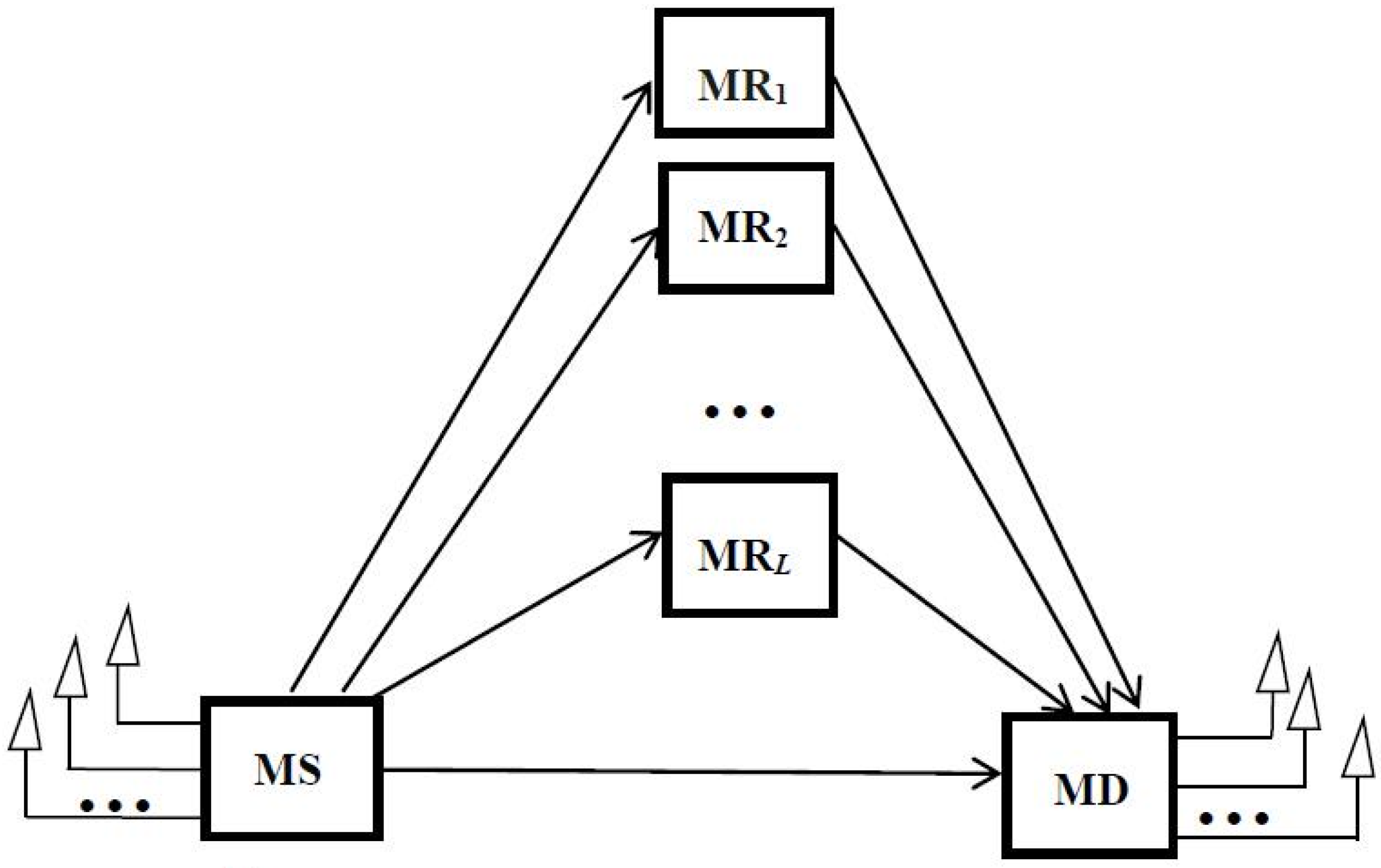
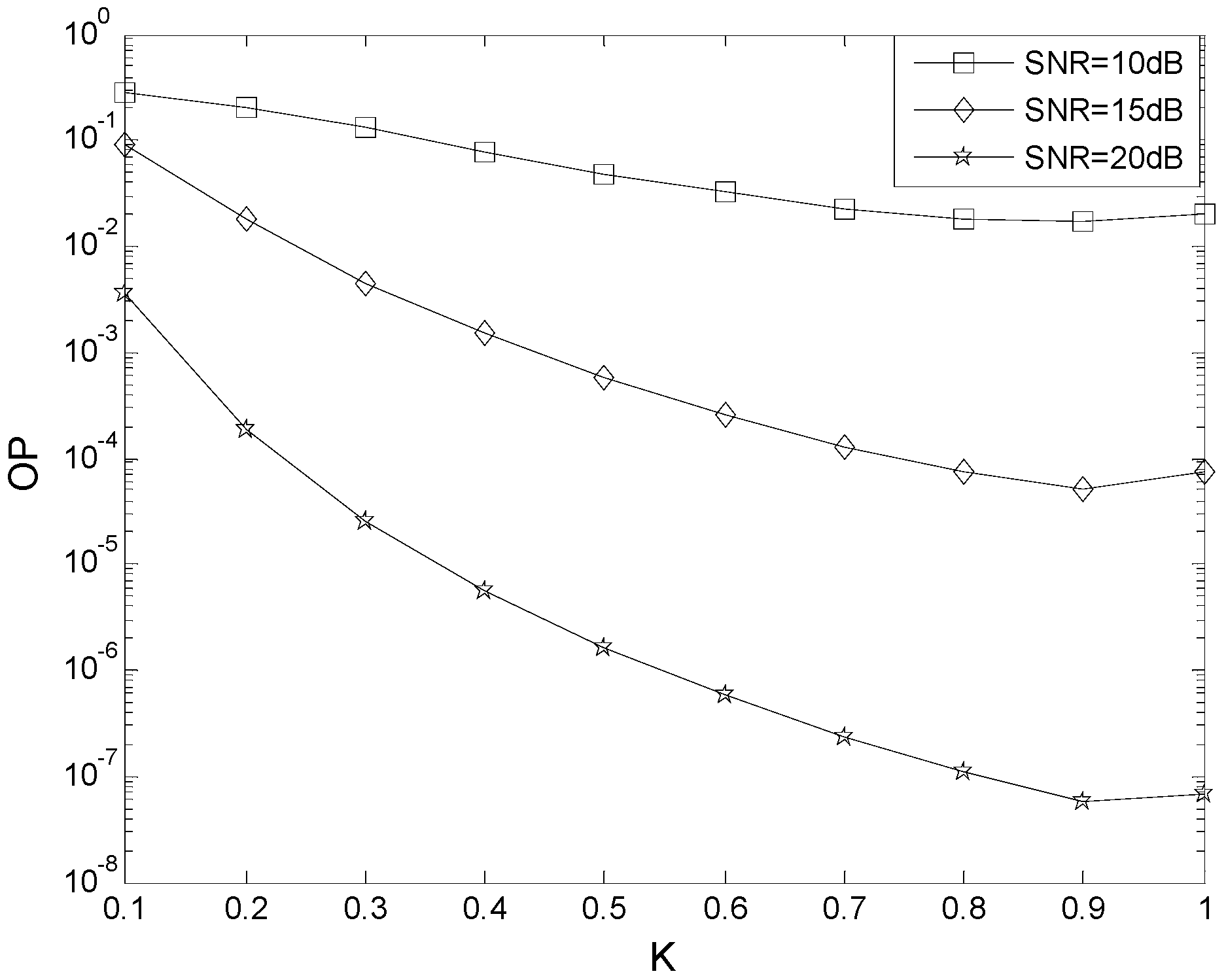
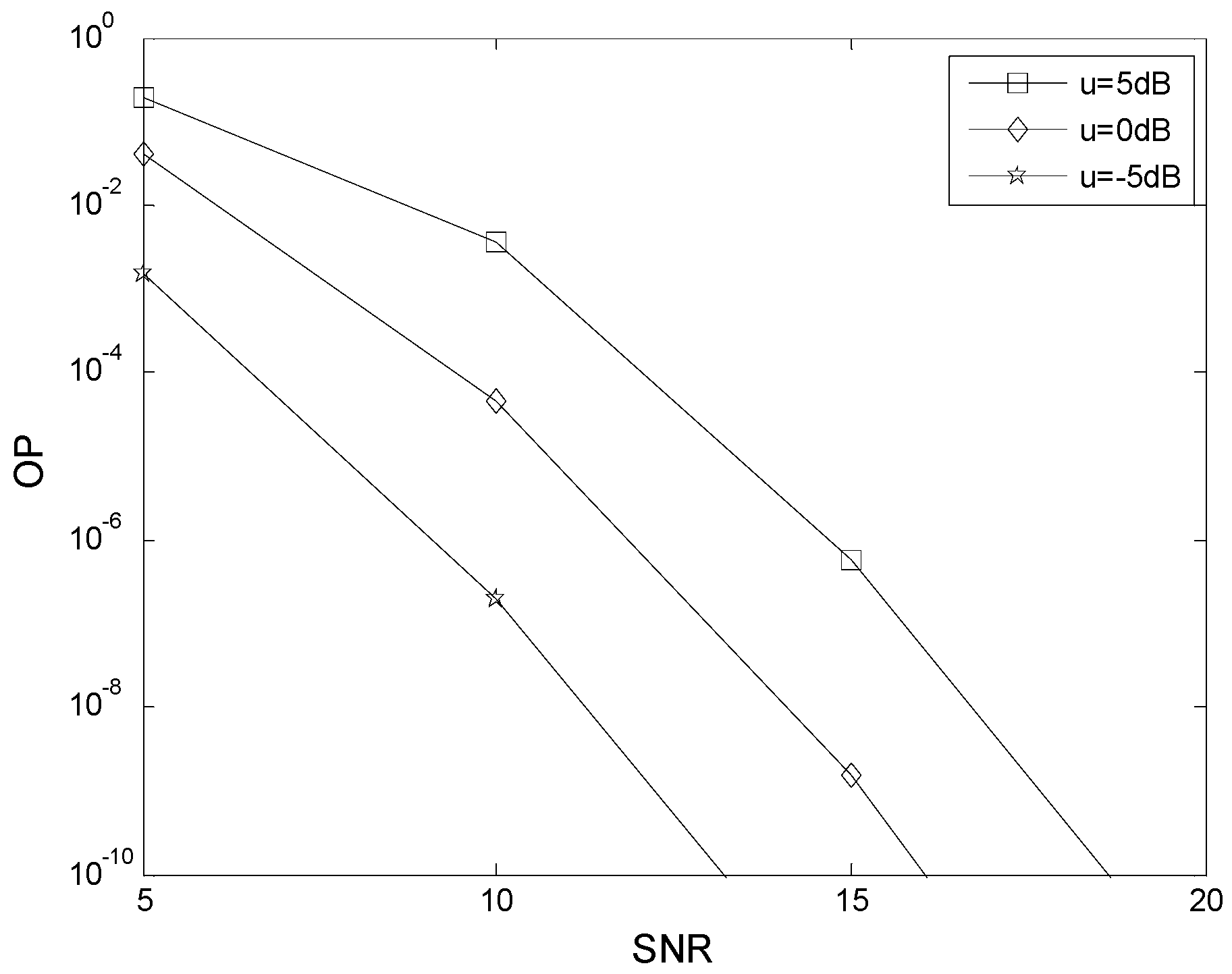
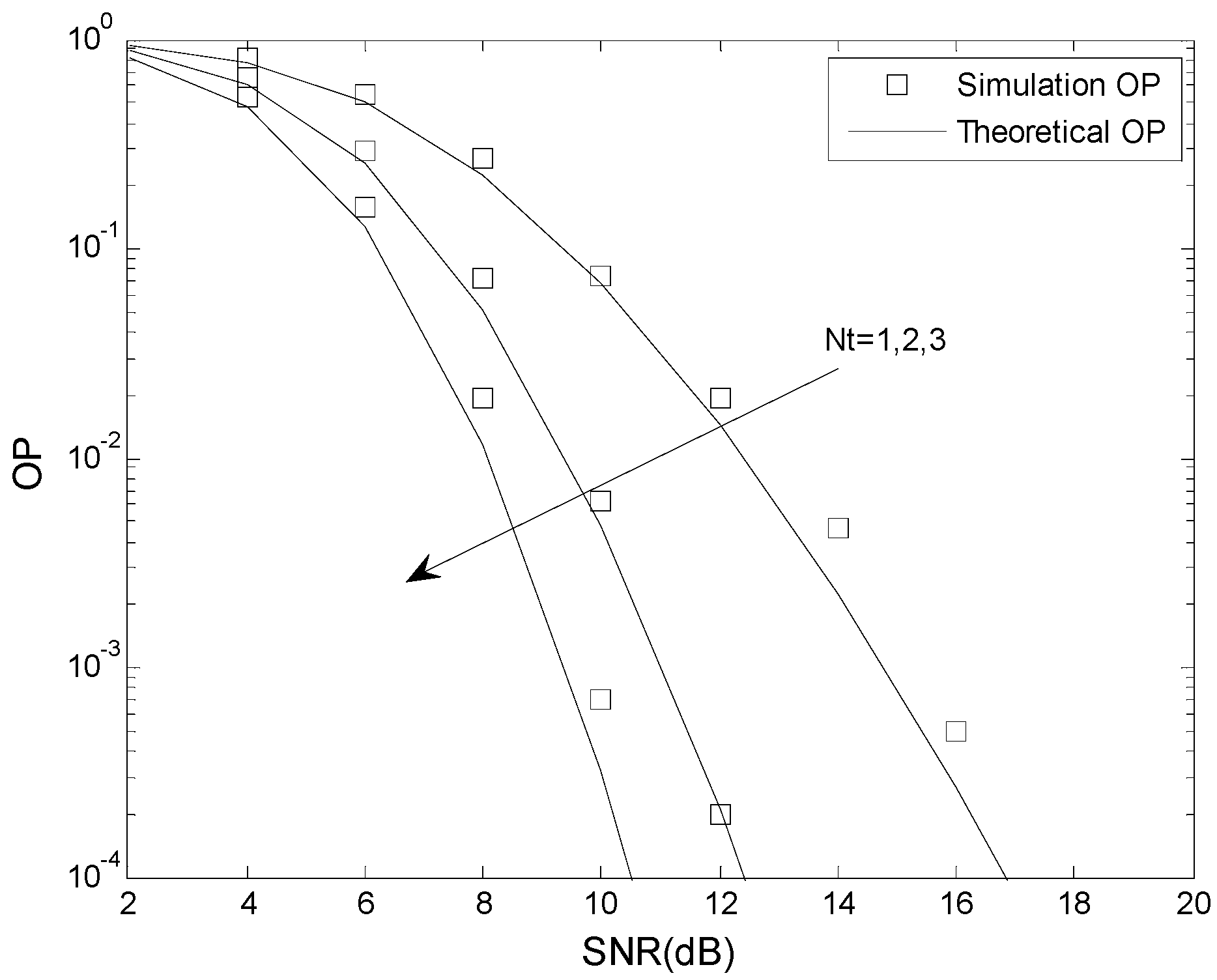

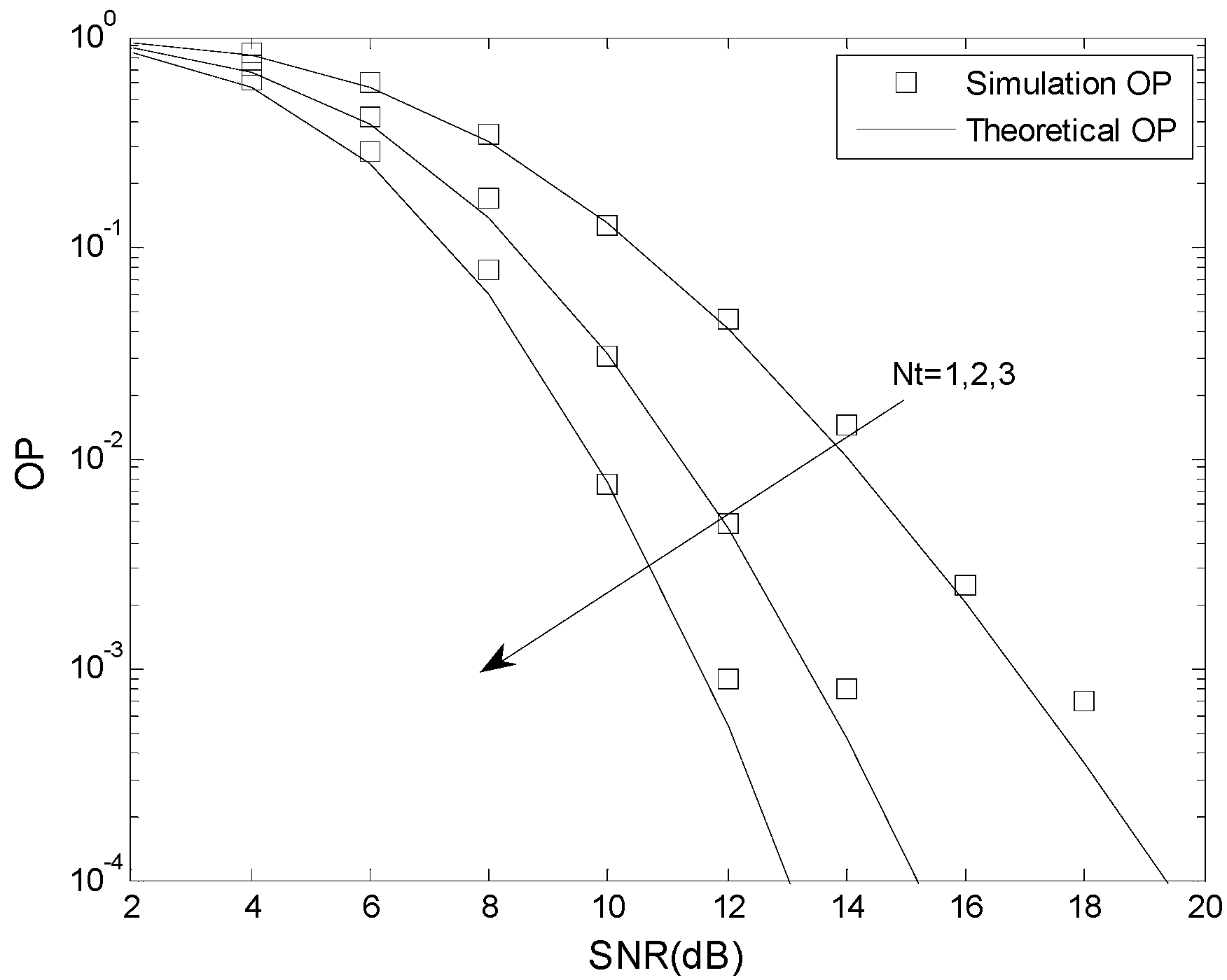
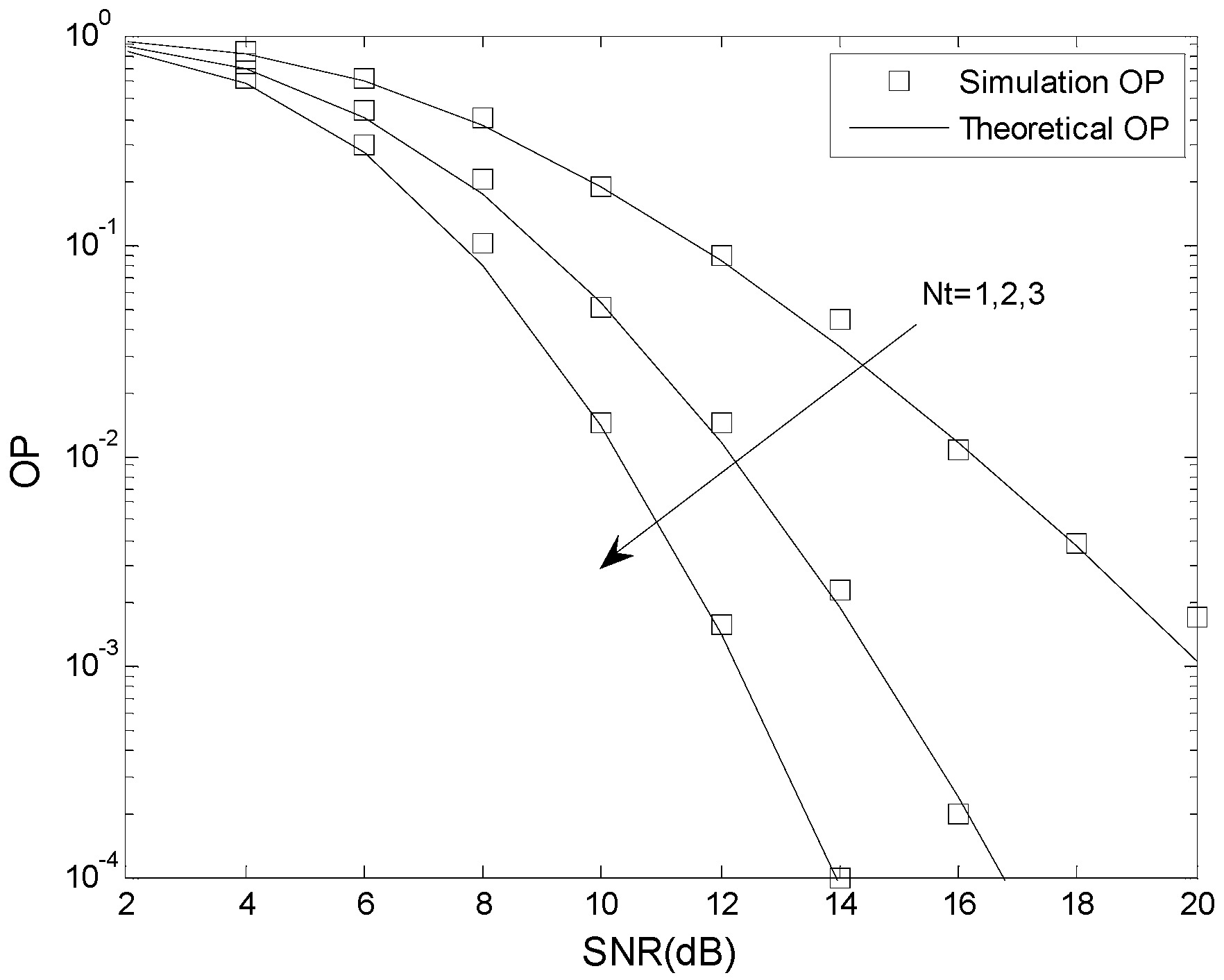
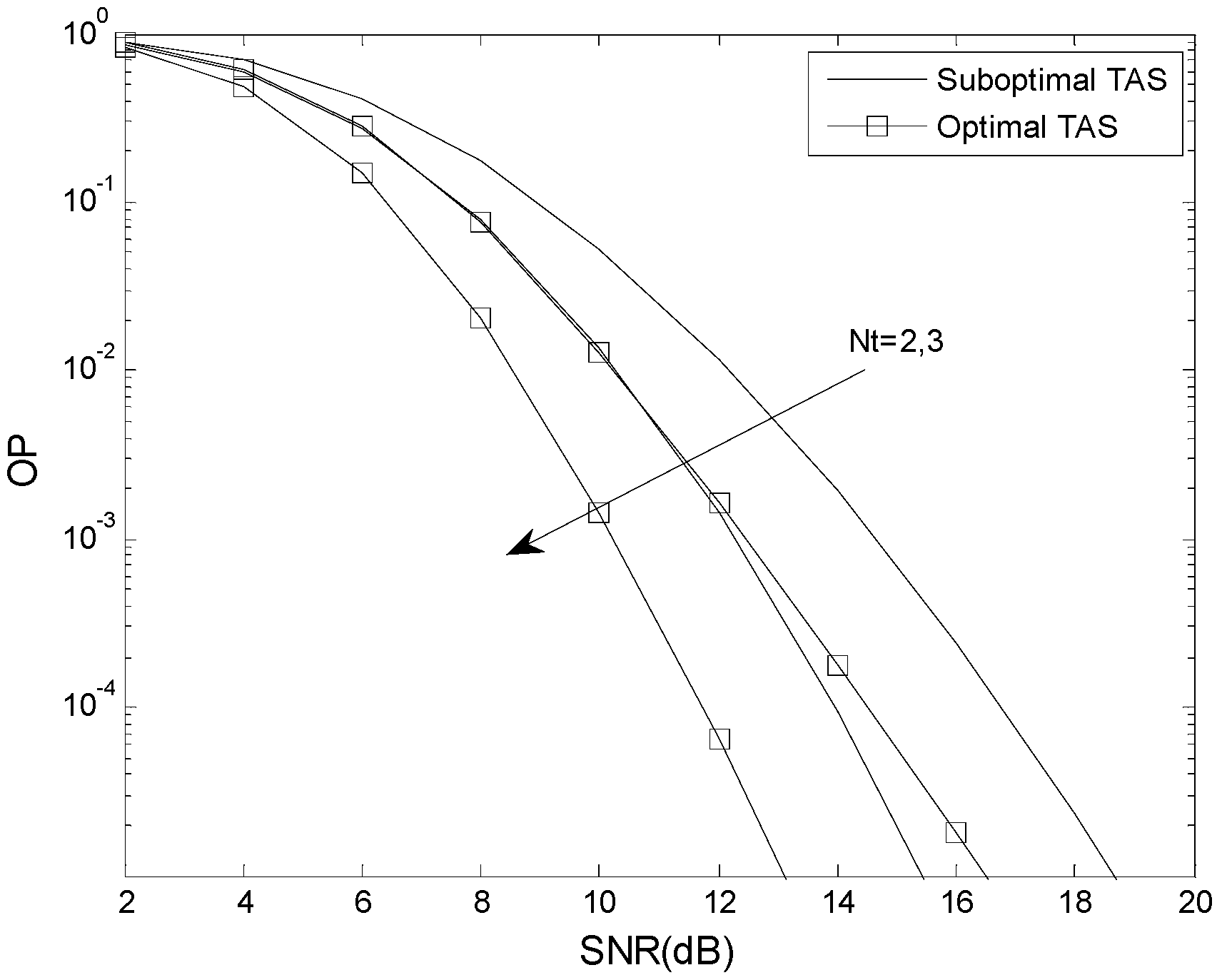
| SNR (dB) | μ = 5 dB | μ = 0 dB | μ = −5 dB |
|---|---|---|---|
| 5 | 0.99 | 0.41 | 0.51 |
| 10 | 0.51 | 0.41 | 0.47 |
| 15 | 0.50 | 0.44 | 0.45 |
| 20 | 0.50 | 0.47 | 0.46 |
© 2016 by the authors; licensee MDPI, Basel, Switzerland. This article is an open access article distributed under the terms and conditions of the Creative Commons by Attribution (CC-BY) license (http://creativecommons.org/licenses/by/4.0/).
Share and Cite
Xu, L.; Zhang, H.; Gulliver, T.A. Joint Transmit Antenna Selection and Power Allocation for ISDF Relaying Mobile-to-Mobile Sensor Networks. Sensors 2016, 16, 249. https://doi.org/10.3390/s16020249
Xu L, Zhang H, Gulliver TA. Joint Transmit Antenna Selection and Power Allocation for ISDF Relaying Mobile-to-Mobile Sensor Networks. Sensors. 2016; 16(2):249. https://doi.org/10.3390/s16020249
Chicago/Turabian StyleXu, Lingwei, Hao Zhang, and T. Aaron Gulliver. 2016. "Joint Transmit Antenna Selection and Power Allocation for ISDF Relaying Mobile-to-Mobile Sensor Networks" Sensors 16, no. 2: 249. https://doi.org/10.3390/s16020249
APA StyleXu, L., Zhang, H., & Gulliver, T. A. (2016). Joint Transmit Antenna Selection and Power Allocation for ISDF Relaying Mobile-to-Mobile Sensor Networks. Sensors, 16(2), 249. https://doi.org/10.3390/s16020249







